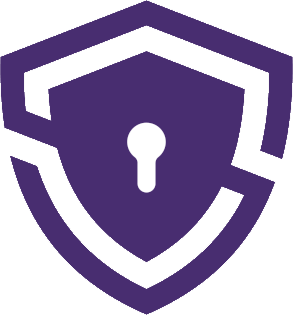Why do schools and universities block content on their networks? Is it a draconian measure to stifle creativity, or a necessary step to maintain focus and discipline? The answer lies somewhere in between.
Schools and universities, in their quest to create an environment conducive to learning, often find themselves in a position where they must restrict access to certain content. Be it the torrenting of the latest binge-worthy series or the endless scroll through social media, these distractions can hinder the educational process.
Enter the Virtual Private Network (VPN), a digital knight in shining armor, designed to help students and faculty get around most school Wi-Fi restrictions. But what if this knight suddenly falls off its horse? What if your VPN, which once allowed you to explore the digital world freely, suddenly decides to stop working on school grounds or campus Wi-Fi?
The situation is not as uncommon as you might think, and it’s not a simple matter of technology failing us. There’s a method to this digital madness, and it’s time to explore how schools manage to block VPNs and what you can do about it.
How Schools Block VPNs
1. Blacklisting VPN IP Addresses
Why do schools block VPN IP addresses, and how does it affect you?
The quickest way to block a VPN is to filter the IP addresses used by their servers. It’s a tactic employed not just by educational institutions but also by services like Netflix and other streaming sites to prevent people from bypassing their geo-blocks.
Your school may simply use the same kind of IP-gathering service (e.g., MaxMind) to block your provider from their network. Free VPNs are typically hit the hardest, as they can’t afford to keep getting fresh new IPs for their users.
So, what’s the solution?
Thankfully, most major VPNs out there have the resources to stay one step ahead of such blocking efforts. If you’re using a free VPN right now, and it doesn’t work on school Wi-Fi, you may simply need to switch to a paid option like NordVPN, and see if things change. You can try also a cheaper option which is a 7-day trial of PureVPN for $0.99.
2. Port Blocking
What are ports, and why are they blocked?
School network admins usually block ports to deal with content like Steam, torrents, multiplayer games, and other stuff where IP-blocking doesn’t cut it. For instance, if ports 27015-27050 were to be blocked, users would no longer be able to log in or download games through the Steam client.
VPNs that use the OpenVPN protocol are usually configured to work on TCP port 443 or UDP port 1194. If your school blocks any of these ports – well, you can pretty much guess the result.
Is there a way around port blocking?
Port blocking is a more complex issue, and it may require technical expertise to overcome. However, understanding the nature of the block and consulting with your VPN provider’s support team may lead to a solution.
3. Deep Packet Inspection (DPI)
What is Deep Packet Inspection, and how does it affect VPN usage?
It’s less likely (but still possible) for your school to use deep packet inspection (DPI) to detect encrypted data packets. These may signal the type of VPN encryption you’re using, but not the contents of your data. Either way, the school network admins may use that information to block your VPN traffic. Countries like China also use DPI to censor the Internet and filter VPN traffic (see the Great Firewall of China).
Can DPI be bypassed?
Bypassing DPI requires a more sophisticated approach and may involve using specialized VPN services that can disguise the encrypted data packets. It’s a game of digital cat and mouse, where the technology evolves on both sides.
Solutions If Your VPN Is Blocked on School Wi-Fi
In the previous sections, we delved into the labyrinthine ways schools employ to block VPNs. But fear not, dear reader, for every lock has a key, and every digital wall has a gateway. Let’s explore the solutions that can help you unblock your VPN on school Wi-Fi.
1. Run OpenVPN on TCP Port 443 or UDP Port 53
What’s the significance of these ports, and how can they help?
TCP Port 443 is the standard port used by HTTPS connections, which most websites use nowadays (79.1%, according to W3Techs). As such, the port is rarely blocked without severe compromises to what people can access on the network. Similarly, UDP Port 53 is used for Domain Name System (DNS) traffic, translating domain names into IP addresses and vice-versa.
How can you utilize these ports?
In ExpressVPN, OpenVPN connections use TCP port 443 by default. Meanwhile, other providers like Private Internet Access let you choose from a few different ports, including TCP 443 and UDP 53. You can find the option in the app settings, under “Connection.” By running OpenVPN on these specific ports, you can bypass common port-blocking tactics.
2. Try a VPN with Obfuscation
What is obfuscation, and why is it essential?
Without getting too technical, obfuscation disguises your VPN traffic as your everyday HTTPS traffic, allowing it to bypass more advanced filtering systems. It’s how some VPN providers get their service to work in countries like China, which heavily restrict VPN traffic.
How can you enable obfuscated servers?
Here’s how you can enable obfuscated servers in NordVPN, for example. First, enter the app settings and go to Auto-connect. Turn off the “Choose a VPN protocol and server automatically” option. Two new options will appear. To enable them, click on the drop-down menu and select OpenVPN (TCP), then go to “Advanced” and turn on “Obfuscated servers (OpenVPN (TCP))”. A new category called “Obfuscated servers” will pop up in the in-app server list. Feel free to select any of them to disguise your VPN traffic.
3. Use TOR Browser
What is the TOR Browser, and how can it help?
If you don’t mind incredibly slow speeds, using the Tor Browser after turning on your VPN might do the trick. The Tor network is designed to provide anonymity and privacy, routing your traffic through multiple servers around the world.
Is there a catch?
Of course, many schools nowadays block Tor traffic as well, so you may be back to square one. Also, using Tor might be associated with shady activities, so discretion is advised.
4. Alternative Solutions
What if the standard solutions don’t work?
Sometimes, the network admins put up quite the fight, and the usual tricks don’t work. In that case, you might need to think outside the box.
a. Download VPN Software on a Different Network
Some schools may outright block all known VPN sites to prevent students from downloading VPN software. In that case, simply download the app installer on a different network, like the hotspot at your local café.
b. Access Your Home Computer Remotely
Unless your school blocks remote desktop software as well, you can always use it to access your personal PC. That way, you can browse the web and freely access content as if you were at home.
c. Use Your Smartphone’s Mobile Connection
This one’s a no-brainer; if your VPN is not working on the school Wi-Fi, just switch to mobile data. You can even turn your smartphone into a mobile hotspot to connect other devices to an unfiltered Internet connection.
VPN Still Not Working on School Wi-Fi? Try This Instead
The digital world is ever-changing, and sometimes, even the most tried-and-true solutions may fail. If you’ve reached this point, and nothing seems to work, then there are a few more things to do before throwing in the towel.
1. Access Your Home Computer Remotely
Didn’t we mention this before?
Yes, but it’s worth repeating. Tools like Microsoft Remote Desktop or Chrome Remote Desktop can be a lifesaver. You can connect to your PC from a Windows, Android, or iOS device, and browse the web as if you were at home.
2. Use Your Smartphone’s Mobile Connection
Again, why repeat this point?
Because sometimes, the simplest solutions are the most effective. Using a school-provided laptop and can’t install a VPN on it? Check out guides on how to share a VPN connection from Android to PC (Windows and Mac). With the right VPN, you’ll be able to access blocked content even if your school doesn’t let you install third-party apps on their devices.
3. Explore Other VPN Providers
Is switching VPNs a viable solution?
Absolutely. Sometimes, the issue might be with the specific VPN provider you’re using. Exploring other reputable providers might lead you to one that works seamlessly on your school’s network.
Conclusion
In the digital age, where the world’s knowledge is but a click away, the barriers erected by educational institutions can seem both frustrating and archaic. Yet, as we’ve explored, these barriers are often in place for reasons that extend beyond mere control. They are part of a complex ecosystem that balances the need for focus, security, and responsible use of technology.
The failure of VPNs to work on school Wi-Fi is not a mere glitch in the system but a deliberate and often sophisticated effort to maintain this balance. However, as with all things technological, there are ways around these barriers for those who seek them.
We’ve journeyed through the how and why of VPN blocking and explored the myriad ways to overcome these digital walls. From understanding IP blacklisting to the art of obfuscation, from the slow but steady path of the Tor Browser to the simple switch to mobile data, the solutions are as varied as they are ingenious.
Yet, let us not forget the underlying ethos of responsible use. The pursuit of knowledge is noble, but so too is the respect for the rules and guidelines that govern our educational spaces. May your digital explorations be both fruitful and respectful, guided by curiosity and tempered by wisdom.
Schools block VPNs to maintain a focused learning environment, comply with legal requirements, and prevent access to inappropriate or distracting content. It’s part of a broader strategy to ensure that technology enhances rather than hinders the educational process.
Yes, if your school has a clear policy against the use of VPNs and you are found to be in violation of that policy, you could face disciplinary actions. It’s always best to understand and comply with your school’s technology policies.
While the use of VPNs is generally legal, whether or not they work on school Wi-Fi depends on the specific blocking methods employed by the school. Some paid VPNs with advanced features may be more successful in bypassing these blocks, but it’s essential to consider the school’s policies before using them.
If none of the solutions work, it may be best to respect the school’s restrictions and find alternative ways to access the information you need. Consult with teachers, librarians, or other resources that may be able to assist you within the bounds of the school’s policies.
While a VPN can be a valuable tool for research and accessing diverse information, its use within a school’s network should align with the institution’s policies and guidelines. If you have a legitimate educational need, it may be best to discuss it with a teacher or administrator to find an appropriate and acceptable solution.
Ethics can be subjective, and what may seem like a reasonable action to one person might be viewed differently by another. Bypassing school Wi-Fi restrictions may be seen as a breach of trust or a violation of community standards. It’s a question that each individual must weigh, considering both personal beliefs and the shared values of the educational community.

